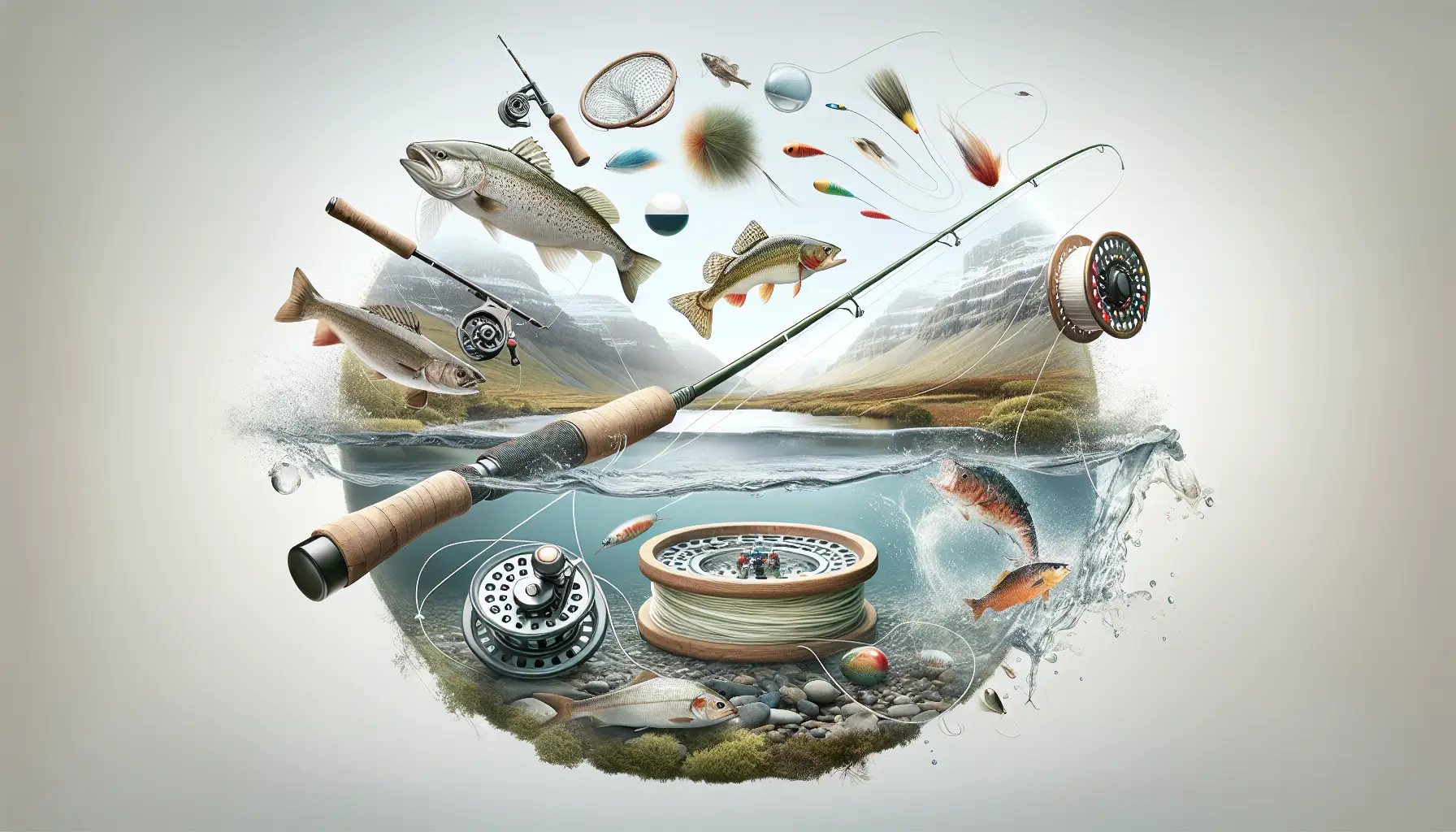My Fly Fishing Adventure Begins
Stepping into the World of Fly Fishing
When I decided to give fly fishing a whirl, I was so pumped to get started. This hobby seemed like the ultimate cocktail of patience, skill, and soaking up the great outdoors. But like any new pursuit, it came with its fair share of homework. I had to cozy up to the gear, figure out the techniques, and most of all, tackle the lingo. Wrapping my head around these terms was key to jibber-jabbering with fellow fish fanatics and making the whole experience more fun.
Why Understanding Terminology is Key
Getting a grip on fly fishing vocabulary was super important for a few reasons. First off, it helped me not bungle instructions, whether I was diving into a how-to or glued to a casting tutorial. Jargon mastery also meant I could grill experienced anglers without sounding like a rookie.
Plus, knowing my stuff is a game changer when it’s time to rig my gear. For example, telling a tippet from a leader or nailing down the right knots for newbies, it all adds to the fun and keeps frustrations at bay.
Being lingo-savvy also means dodging silly rookie mistakes and keeping up with decent fly fishing etiquette while out on the water.
| Term | Definition |
|---|---|
| Fly | Pretend bug to trick fish. |
| Tippet | The last bit that connects to your fly. |
| Leader | The intermediary between the fly line and fly. |
| Backcast | The move you make when going over your shoulder. |
Nailing these terms and more sets me up for good times on the water, inching me closer to becoming a skilled angler. It’s the stepping stone to leveling up in this awesome sport. If you’re piecing together a kit, check out the full gear checklist.
Essential Fly Fishing Terms
When I first dipped my toes into the world of fly fishing, I quickly learned that getting a grip on the lingo was pretty important. Let me share some fly fishing terms every newbie, like I once was, should get familiar with.
Fly
A fly, in the world of fishing, isn’t just any bug. It’s a crafty little lure we use to trick fish into thinking it’s lunch. Flies are made to look like all sorts of critters you’d find hanging out in or near the water, like bugs and little fishy snacks. There’s a whole swarm of them, each designed for different water scenes and fish. Curious about the nitty-gritty between wet and dry flies? Check out my take on dry vs. wet flies.
| Type of Fly | Description |
|---|---|
| Dry Fly | Floats like a feather on water |
| Nymph | Pretends to be a young bug underwater |
| Streamer | Acts like a tiny fish or prey |
Tippet
Think of the tippet as the skinny line running from the fly to the leader. It’s vital for getting the fly to dance just right in the water. You pick your tippet based on the fish you’re going for and how wild the water is. If you’re itching to learn knot skills, dive into fly fishing knots for beginners.
Leader
The leader’s like the go-between from the fly line to your tippet. It’s tapered, helping the fly land just so. Leaders come in all sorts of lengths and styles. Picking the right one? That depends on your fly choice and the water you’re fishing. For more insight, check out my guide to fly fishing leaders.
| Leader Length | Ideal For |
|---|---|
| 7.5 feet | Narrow, twisty streams |
| 9 feet | Everyday fishin’ |
| 12 feet and longer | Crystal-clear water or jumpy fish |
Backcast
The backcast’s that tricky move where you flip the line behind you before launching it forward. Nail this technique, and you’ll send that fly exactly where you aim. Need more casting tricks? My article on casting a fly rod has some neat pointers.
Grasping these fly fishing terms will help ease you into the fishing life. With these basics down, I’m all set to delve into cool moves like the roll cast or setting the hook. Eager to start your own fishing saga? Here’s a tip: read where to fly fish for beginners. Happy fishing!
Fly Fishing Jargon
Getting a grip on the talk is a huge chunk of getting comfy with fly fishing. Here’re a few more terms I’ve picked up that have been key as I’ve got more into this hobby.
False Cast
So, a false cast is like practice swings in golf but for fishing. I’m all about keeping my line in the air and working on my aim without plopping the fly into the water yet. It’s great for getting the feel right and tweaking where that line’s going without actually letting it drop. Brush up on casting with how to cast a fly rod.
Dry Fly
Dry flies are sneaky imitations of bugs that float on the water. I toss these out there when I spy fish snapping at stuff on the water’s surface. There’s nothing like the thrill of seeing a fish rise up for my fly; it’s a little victory. They usually mimic grown-up insects, like mayflies and caddisflies. Want to know what makes them different from wet ones? Swing by difference between wet and dry flies.
Nymph
A nymph’s a bug in disguise, pretending to be an underwater insect just chilling right below the surface. Fishing with these is about sneaking them under the surface where fish munch on them. The trick with nymphs is all about feeling those sneaky bites—patience pays off, trust me. Dive into fly choices with beginner fly selection.
Streamer
Streamers are like bait’s big brother, looking like bigger critters such as minnows or leeches. When I’m aiming for the big ones, streamers are my go-to. I work them through the water to mimic how prey moves, making them irresistible to those fish bosses. Knowing which fly to use is a beginner must-know, so check out beginner fly selection.
Getting my head around these words has made fly fishing way more rewarding. Whether I’m perfecting my false cast or picking the perfect fly, these terms have been a total game changer. For more tips on getting your gear just right, swing by how to set up fly fishing gear.
Getting the Hang of Fly Fishing Lingo
When I first started fly fishing, I realized that learning the lingo was half the battle. Here’s a breakdown of some terms that have made my trips to the water a whole lot easier—and a little more successful.
Roll Cast
One of the basic skills you need in your fishing toolbox is the roll cast. It’s a lifesaver when trees or rocks make a regular backcast impossible. Basically, it’s about lifting my rod to get the line moving behind me, then “rolling” it forward so my fly lands smooth as butter on the water.
| Step | What to Do |
|---|---|
| 1 | Slowly lift the rod to bring the line behind you |
| 2 | Stop the rod at about 1 o’clock, like you’re pointing at something in the sky |
| 3 | Move the rod forward and down in a smooth oval |
| 4 | Let the fly settle gently on the water |
For a deeper dive, head over to how to cast a fly rod. It’s easier than baking bread.
Dead Drift
The dead drift is all about going with the flow. I let my fly drift naturally with the water, making it look like a real insect floating by. It’s the secret sauce to getting fish to bite—it’s all about looking and acting natural.
Here’s how I nail the dead drift:
- Position: Always aim your cast upstream or across, never straight down.
- Mend: Tweak the line so it doesn’t go dragging your fly out of the magic.
- Peek: Keep an eagle eye on your fly and line.
Get the lowdown on this technique at practice fly casting. Patience, young grasshopper.
Mending
Mending’s like my secret weapon. It’s a way to adjust the line on the water, keeping my fly acting natural. By lifting and flipping parts of the line, I tweak how the fly drifts along, keeping it just right.
| Mend Type | What It Does |
|---|---|
| Upstream Mend | Flips the line against the current, slowing things down |
| Downstream Mend | Pushes the line with the current, picking up speed |
Pair this with a dead drift, and it’s a recipe for success. For more tricks, here’s the fly fishing leader guide.
Setting the Hook
The climax of fly fishing—the hook set. It’s when a fish bites, and I’ve gotta secure that hook. Timing is everything. Jump the gun or hesitate, and the fish might just get away. I’ve learned to yank the rod tip up or to the side with a clean snap.
| Scenario | How to Set the Hook |
|---|---|
| Nymph Fishing | Lift straight up once the indicator goes down |
| Dry Fly | Give the rod a little breather before you set it |
| Streamer | Do a strip set by giving the line a quick tug |
Knowing how to nail this move has saved me a lot of fish tales ending with, “And then it got away.” For some tips on not messing up, check beginner fly fishing mistakes.
Mastering these words and skills has really upped my fishing game. Every time I roll cast, get that dead drift just right, mend the line, or set the hook, I’m a step closer to getting really good at this fun and relaxing sport.

